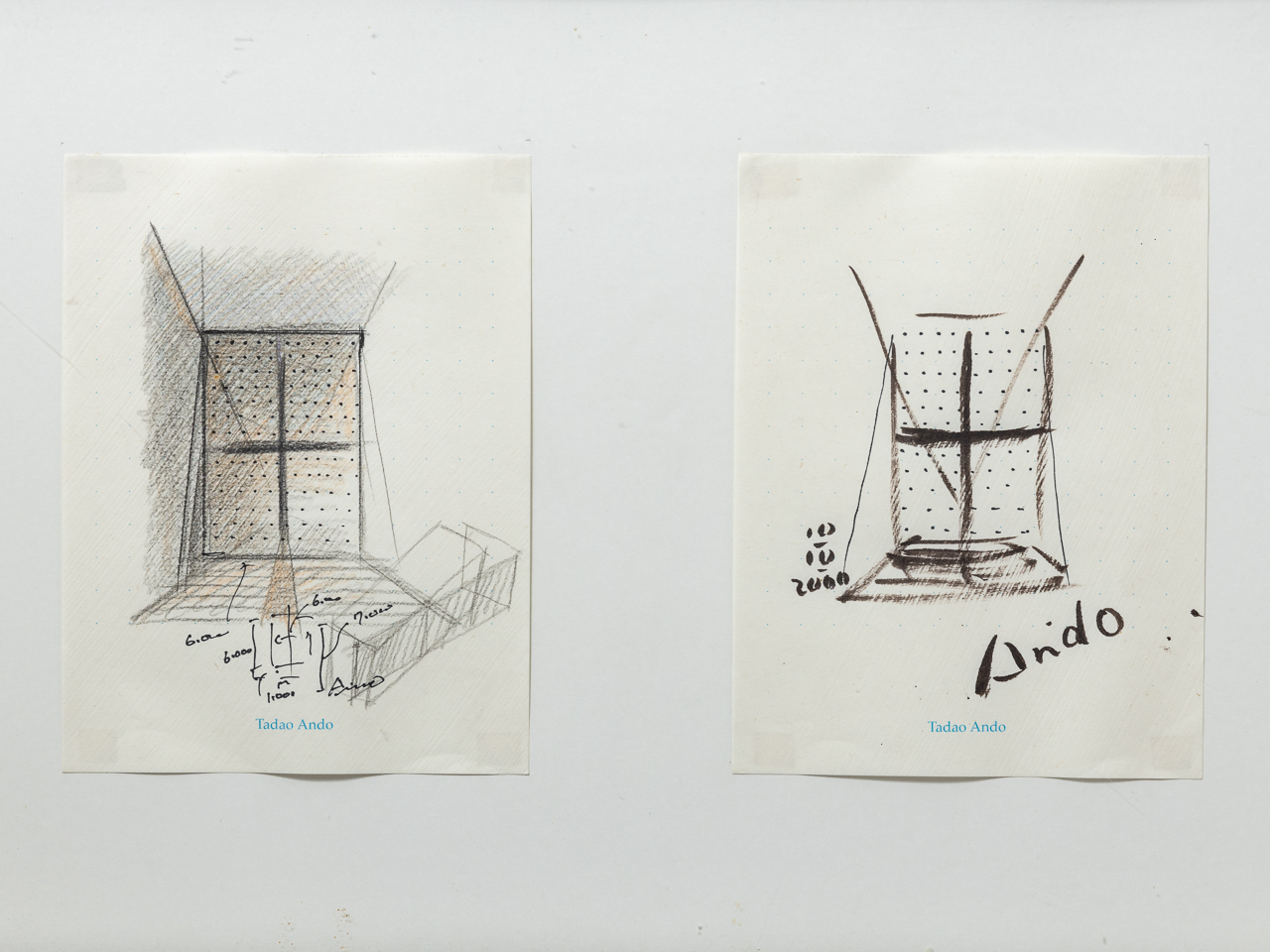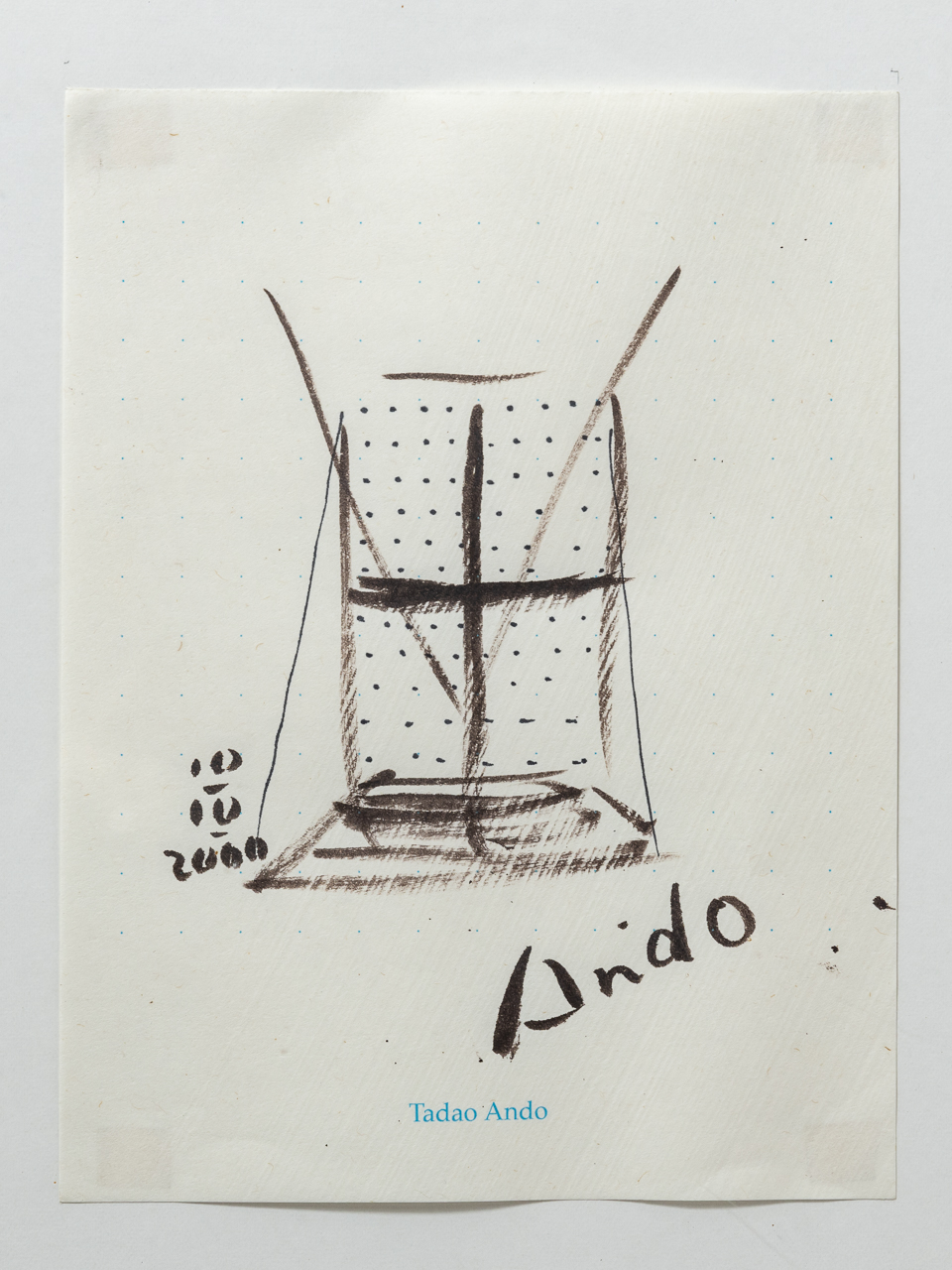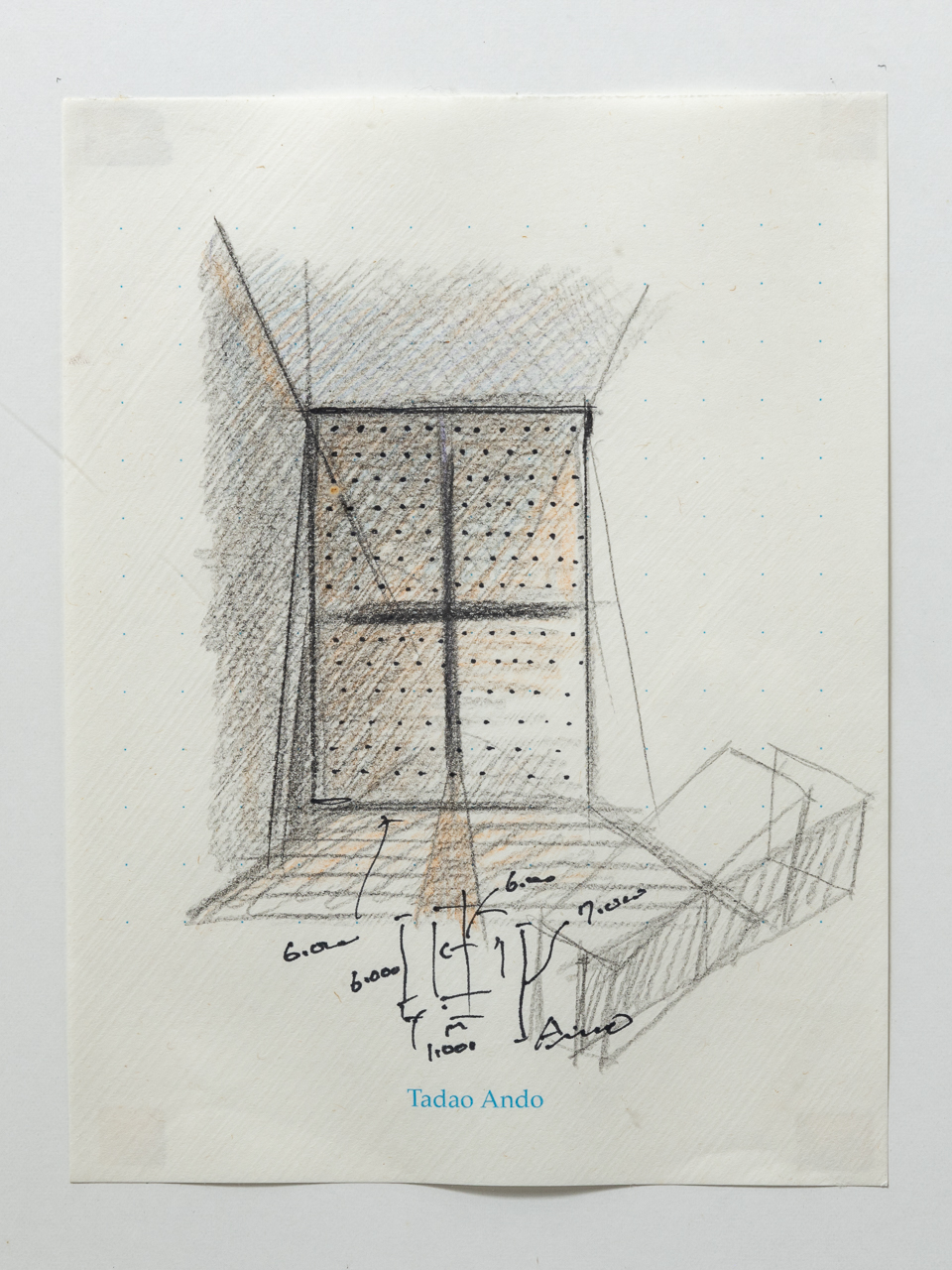安藤 忠雄/Ando Tadao
現代を代表する建築家の安藤忠雄(1941~)は、打ちっぱなしのコンクリートと幾何学的造形、自然との調和といった作風で世界的に高い評価を受けています。
プロボクサーを経て、独学で建築を学んだというその経歴は異色ではありますが、建築への関心は中学生の頃からすでに萌芽していました。自宅の増築に携わった大工の仕事ぶりと、数学教師の熱心な指導がそのきっかけだったといいます。経済的な事情と自身の学力の問題から大学への進学を断念し、双子の弟である北山孝雄の影響で高校2年生からプロボクサーとして活動を始めたものの、建築の道はあきらめきれず、先述の通り自力で勉強をするという選択をしました。建築学科に進んだ友人が授業で使うという専門書をとにかく読み漁り、図面も書き写し、通信教育では作図の基礎やグラフィックデザインなどを自らに叩きこみました。ちなみに、10代の終わり頃には「具体美術協会」にも接触しており、「人のまねをするな」をモットーとした創立者、吉原治良(1905~1972)の方針からも学びを得ています。1963年には丹下健三(1913~2005)をはじめとする日本全国の名建築を、その翌年には海外旅行が自由化されたのを機に念願のル・コルビュジェなど世界各地の建築を見て回りました。こうした旅のなかで、建築家としての自分なりの見方や発想力、不屈の精神が醸成されていきました。
1969年、安藤忠雄建築研究所の設立後は仕事がないなか、誰に頼まれたわけでもない設計プランを次々と持ちこむなど、仕事を自らつくり切り拓こうと精力的に取り組み、それが功を奏して徐々に依頼が増えていきました。実質的なデビュー作であり、1979年に日本建築学会賞を受賞した【住吉の長屋】(1976年)は、三軒長屋の真ん中を切り抜き、コンクリートの箱を挿入したシンプルな構成となっています。狭い空間に大きな宇宙を生み出そうとしたこの建築は、利便性を大前提とした当時の近代住宅の風潮とは一線を画し、鮮烈なインパクトを与えました。その後、コンクリートの壁に切りこまれた十字に外光が差しこみ、「光の十字架」が闇を照らす【光の教会】(1989年)、香川県直島の自然を再生させるアートプロジェクトの一環である【ベネッセハウス】(1992年)や【地中美術館】(2004年)、吹き抜けの閲覧室で子どもたちが自由に本を読める【こども本の森 中之島】(2018年)など、だれもがよく知る斬新で優れた作品を手がけました。17世紀に建設されたヴェネツィアの運河を臨む旧税関を現代美術館に改築した【プンタ・デラ・ドガーナ】(2009年)など、海外の建築物も数多く設計しています。
1987年にイェール大学の客員教授として教鞭をとって以降は、国内外の大学で後進の教育に携わり、2005年には東京大学特別栄誉教授に就任しました。さらに、その活動範囲は建築の分野にとどまらず、阪神淡路大震災や東日本大震災の復興支援、大川・中之島一帯を中心とした桜の植樹活動など、自らを育ててくれた社会への恩返しとして積極的に貢献しています。
特に学歴が重視される建築の世界にあって、常に既存の枠組みを打ち壊し、斬新でありながら時を超えて愛される作品を生み出してきた安藤の挑戦は、今もなお続いています。なぜなら彼は、「最後まで挑戦心を忘れず永遠の青春を追いかける」建築家だからです。
Tadao Ando (born 1941), a leading contemporary architect, is internationally celebrated for his signature style characterized by poured concrete, geometric forms, and a harmonious integration with nature.
While his background as a former professional boxer and self-taught architect is unconventional, his interest in architecture took root in junior high school. This early interest was sparked by observing a carpenter working on an addition to his family home and further nurtured by an enthusiastic math teacher. Due to financial constraints and his own assessment of his academic abilities, he decided against pursuing university. Influenced by his twin brother, Takao Kitayama, he began a career as a professional boxer in his second year of high school. However, his passion for architecture remained, leading him to paursue self-study. He diligently read technical books borrowed from friends studying architecture, meticulously copied drawings, and acquired foundational skills in drafting and graphic design through correspondence courses. Interestingly, during his late teens, he encountered the Gutai Art Association and absorbed the principles of its founder, Jiro Yoshihara (1905-1972), whose guiding principle was “Don’t imitate others.” In 1963, he embarked on a journey to visit renowned architectural sites across Japan, including the works of Kenzo Tange (1913-2005). The following year, with the liberalization of overseas travel, he seized the opportunity to explore architecture globally, including the works of Le Corbusier, whom he greatly admired. It was during these travels that he solidified his own architectural vision and developed his characteristic indomitable spirit.
In 1969, following the establishment of the Tadao Ando Architectural Institute, he faced a period without commissions. Nevertheless, he proactively generated and developed his own design proposals, which gradually led to an increasing number of projects. His breakthrough work, the “Sumiyoshi Row Houses” (1976), which earned the Architectural Institute of Japan Award in 1979, features a simple composition of three terraced houses with a central concrete volume carved out. This architecture, which sought to create a vast inner world within a limited space, made a significant impact by starkly contrasting with the prevailing trend in modern housing that prioritized convenience above all else. Subsequent notable works include the “Church of the Light” (1989), where natural light dramatically enters through a cruciform opening in the concrete wall, illuminating the darkness with a “cross of light”; “Benesse House” (1992), an integral part of an art project aimed at revitalizing the natural environment of Naoshima in Kagawa Prefecture; the “Chichu Art Museum” (2004); and the “Children’s Book Forest Kobe” (2020, not 2005 as implied, likely a typo in the original), a space where children can freely engage with books in a vaulted reading room. Ando has also designed numerous international projects, including Punta della Dogana (2009), a 17th-century former customs house overlooking the canals of Venice, transformed into a contemporary art museum. In 1987, he served as a visiting scholar at Yale University.
Beyond his architectural practice, Ando has been actively involved in education, holding visiting professorships at universities both in Japan and abroad after his time at Yale in 1987. In 2005, he was appointed Distinguished Professor Emeritus at the University of Tokyo. Furthermore, his contributions extend beyond the realm of architecture. He has actively supported the communities that nurtured him by providing reconstruction assistance following the Great Hanshin-Awaji Earthquake and the Great East Japan Earthquake, and through initiatives such as planting cherry trees, particularly in the Ogawa and Nakanoshima areas, as a way of giving back.
Especially within the field of architecture, where academic credentials often hold significant weight, Ando’s journey remains a testament to his persistent challenging of established norms to create works that are both innovative and enduringly admired. This is because he is an architect who “pursues eternal youth, never forgetting the spirit of challenge until the very end”.



作品名:光の教会
サイズ:18.5×14cm(各)(ドローイング 2点一組額装)
価格:50,000円
価格は税抜き表示です

